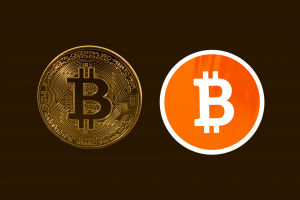A Look at the Evolution of Cryptocurrency
Recently, cryptocurrency has moved into the spotlight. Nearly everyone has heard of cryptocurrency at this point, and many have developed an understanding of some of the aspects of how it works. Most have heard of Bitcoin, and even more have heard of other alternative cryptocurrencies that exist today, such as Litecoin, Ethereum, and Ripple. While many people have become familiar with cryptocurrency, it often seems as though these virtual currencies came out of thin air and suddenly burst on the scene. The truth is that these digital coins had a colorful history prior to becoming more widely known.
The Potential to Transform the Financial World
While the innovations used to produce cryptocurrency are still relatively new, this technology has significant potential to change the financial world as we know it. Often, it has been viewed as a positive development that could become a significant part of our future. The earliest ideas for a digital currency emerged in the 1980s, with many developers and other innovators proposing concepts for a form of currency that would exist strictly in the digital sphere. While none of these ideas ever came to fruition, they did inspire continued investigation into making such a currency happen.
By the 1990s, several potential digital currencies were developed, coinciding with the general tech boom at the time. Systems that were developed included DigiCash, Beenz, and Flooz. It is important to note that all of these early cryptocurrency systems chose to use a Trusted Third Party system. What this means is that the companies behind these various cryptocurrency systems were used to verify and facilitate transactions.
The Emergence of Bitcoin
 Many years later, in 2008, a white paper was published under the alias of Satoshi Nakamoto. While the true identity of Satoshi Nakamoto is not known—and it is possible that it could be a single programmer—most believe that a group of programmers operates under this alias. A white paper is a type of technical document that is created to explain a scientific project of some kind. In this case, the white paper was titled “Bitcoin: A Peer-to-Peer Electronic Cash System.” Around the same time that this paper was published, the domain name bitcoin.org was purchased, and the software used to mine Bitcoin was also released for the first time. By the following year, 2009, Satoshi Nakamoto sent some Bitcoin to another person, effectively launching the first digital currency.
Many years later, in 2008, a white paper was published under the alias of Satoshi Nakamoto. While the true identity of Satoshi Nakamoto is not known—and it is possible that it could be a single programmer—most believe that a group of programmers operates under this alias. A white paper is a type of technical document that is created to explain a scientific project of some kind. In this case, the white paper was titled “Bitcoin: A Peer-to-Peer Electronic Cash System.” Around the same time that this paper was published, the domain name bitcoin.org was purchased, and the software used to mine Bitcoin was also released for the first time. By the following year, 2009, Satoshi Nakamoto sent some Bitcoin to another person, effectively launching the first digital currency.
What Makes Bitcoin So Unique?
The primary difference between the way that Bitcoin worked and the attempts at earlier versions of cryptocurrency was demonstrated in its use of a decentralized network to verify transactions, bypassing banks and other third parties. The decentralized network made for a more secure process and a true person-to-person payment method. The updated level of security solves a problem that has been present ever since the first digital currencies were developed. In order to prevent the possibility of duplicating transactions, a new type of transaction ledger emerged: a distributed network.
While the modern-day distributed networks were created in the 1960s and 1970s, using them for verification purposes in a transaction ledger is what makes the blockchain technology that forms the core of Bitcoin so unique. Unlike traditional methods of processing credit card payments—in which one computer on a distributed network is responsible for the verification of financial transactions—with Bitcoin, the blockchain technology distributes the responsibility for verification across the entire network.
For security purposes, this makes it nearly impossible to duplicate or change transactions, as the information is contained and verified across the entire network in multiple locations. Every block on the hypothetical chain contains information about financial transactions, along with a unique identifier, as well as the information contained on every other block on the chain before that one. It is this method of distributing information and verification among the distributed network that helps to make Bitcoin secure.
Other Coins
 After Bitcoin burst on to the scene, other types of cryptocurrency soon followed, giving us currencies such as Litecoin; Ethereum; Ripple, Dash, and even Theta, which is a potential game-changer in the market of skyrocketing data and video demand. Today, there are more than 2,000 different types of altcoins on the market that people can buy and sell in various marketplaces, as well as use as an investment or to make purchases. As for the future of digital cryptocurrencies? While it’s difficult to say what the future will hold exactly, it certainly seems as though these digital forms of payment may indeed be around for the long haul. For the speculative or aggressive growth portion of someone’s portfolio, a smattering of cryptocurrencies could yield great results over time.
After Bitcoin burst on to the scene, other types of cryptocurrency soon followed, giving us currencies such as Litecoin; Ethereum; Ripple, Dash, and even Theta, which is a potential game-changer in the market of skyrocketing data and video demand. Today, there are more than 2,000 different types of altcoins on the market that people can buy and sell in various marketplaces, as well as use as an investment or to make purchases. As for the future of digital cryptocurrencies? While it’s difficult to say what the future will hold exactly, it certainly seems as though these digital forms of payment may indeed be around for the long haul. For the speculative or aggressive growth portion of someone’s portfolio, a smattering of cryptocurrencies could yield great results over time.
Author
Robert Ryerson
Although Robert M. Ryerson completed all the necessary requirements to earn bachelor of arts degrees in both English and economics at Rutgers University, college policy at the time prohibited the issuance of dual degrees. As a result, he graduated from Rutgers with a single bachelor of arts in economics before finding employment as a stockbroker with Shearson Lehman American Express in New York City 1984. Robert M. Ryerson has since established himself as a respected estate administrator and legacy planner. In addition to his economics degree from Rutgers, Mr. Ryerson holds several professional designations including Retirement Income Certified Professional (RICP)®; Certified In Long Term Care (CLTC)®; Certified Financial Fiduciary (CFF)®, and Certified Identity Theft Risk Magenament Specialist (CITRMS)®. He has shared his knowledge on the subject of identity theft as the author of the book What’s The Deal With Identity Theft?: A Plain-English Look at Our Fastest Growing Crime. He has also covered identity theft issues directly for students as the instructor of the adult education course Understanding Identity Theft: Our Fastest Growing Crime.






